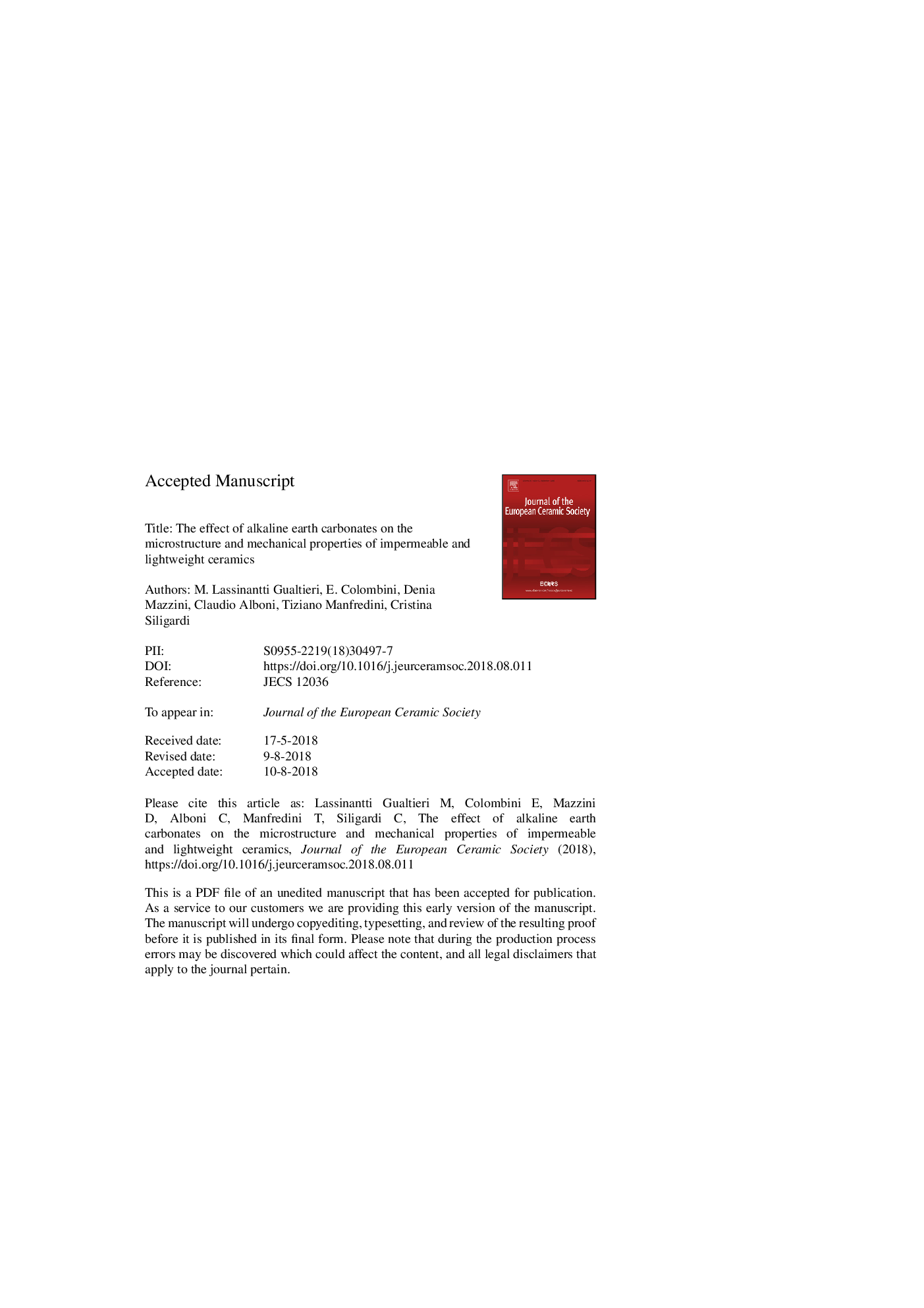| Article ID | Journal | Published Year | Pages | File Type |
|---|---|---|---|---|
| 10155507 | Journal of the European Ceramic Society | 2018 | 22 Pages |
Abstract
Lightweight impermeable ceramic bodies were designed by combining pore templating and controlled viscous sintering through in-situ crystallization. Various amounts of limestone were added to a glass-fluxed low-temperature stoneware tile formulation. Closed porosity was created by decomposition of carbonates prior to sintering, thus leaving voids that were not completely filled by the viscous melt. The resulting oxides chemically modified the liquid phase and promoted the crystallization of β-wollastonite, diopside and anorthite. Hence, viscous sintering was affected. The addition of limestone brought on several advantages: the temperature of maximum sintering rate was decreased (<900â°C); the dimensional stability range was extended; the matrix was reinforced by newly-formed crystals that compensated for the global structure weakening evoked by increased porosity; an increase in whiteness was observed in concomitance to crystallization, reaching values only obtained when using zircon as opacifier (L*=87).
Related Topics
Physical Sciences and Engineering
Materials Science
Ceramics and Composites
Authors
Magdalena Lassinantti Gualtieri, Elena Colombini, Denia Mazzini, Claudio Alboni, Tiziano Manfredini, Cristina Siligardi,
